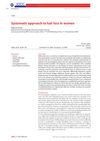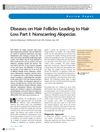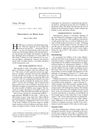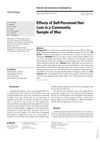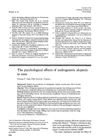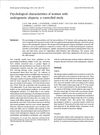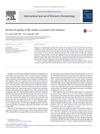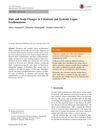Quality of Life and Psychosocial Impact of Scarring and Non-Scarring Alopecia in Women
January 2015
in “
Journal der Deutschen Dermatologischen Gesellschaft
”
scarring alopecia non-scarring alopecia Dermatology Life Quality Index DLQI Hospital Anxiety and Depression Scale HADS Rosenberg Self-esteem Scale RSES UCLA Loneliness Scale UCLA-LS hormone replacement therapy psychotrichological disorders psychosomatic support coping strategies psychopharmacotherapy hormone therapy
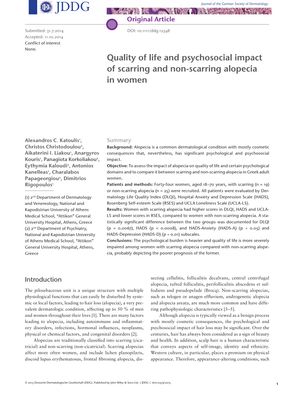
TLDR Women with scarring alopecia have a lower quality of life and more anxiety and depression than those with non-scarring alopecia.
The study from 2015 investigated the effects of scarring and non-scarring alopecia on the quality of life and psychological well-being in 44 Greek women aged 18-70. Using the Dermatology Life Quality Index (DLQI), Hospital Anxiety and Depression Scale (HADS), Rosenberg Self-esteem Scale (RSES), and UCLA Loneliness Scale (UCLA-LS), it was found that women with scarring alopecia (n = 19) experienced a significantly lower quality of life and higher levels of anxiety and depression than those with non-scarring alopecia (n = 25). However, there were no significant differences in loneliness and self-esteem between the two groups. The study concluded that scarring alopecia, which is more prevalent in older, postmenopausal women, often on hormone replacement therapy, imposes a greater psychological burden due to its poorer prognosis. The research highlighted the need for psychological support and suggested the creation of a patient registry to better understand the condition. Despite its small sample size and lack of a control group, the study emphasized the importance of addressing psychotrichological disorders with comprehensive care, including psychosomatic support, coping strategies, and psychopharmacotherapy when needed.


